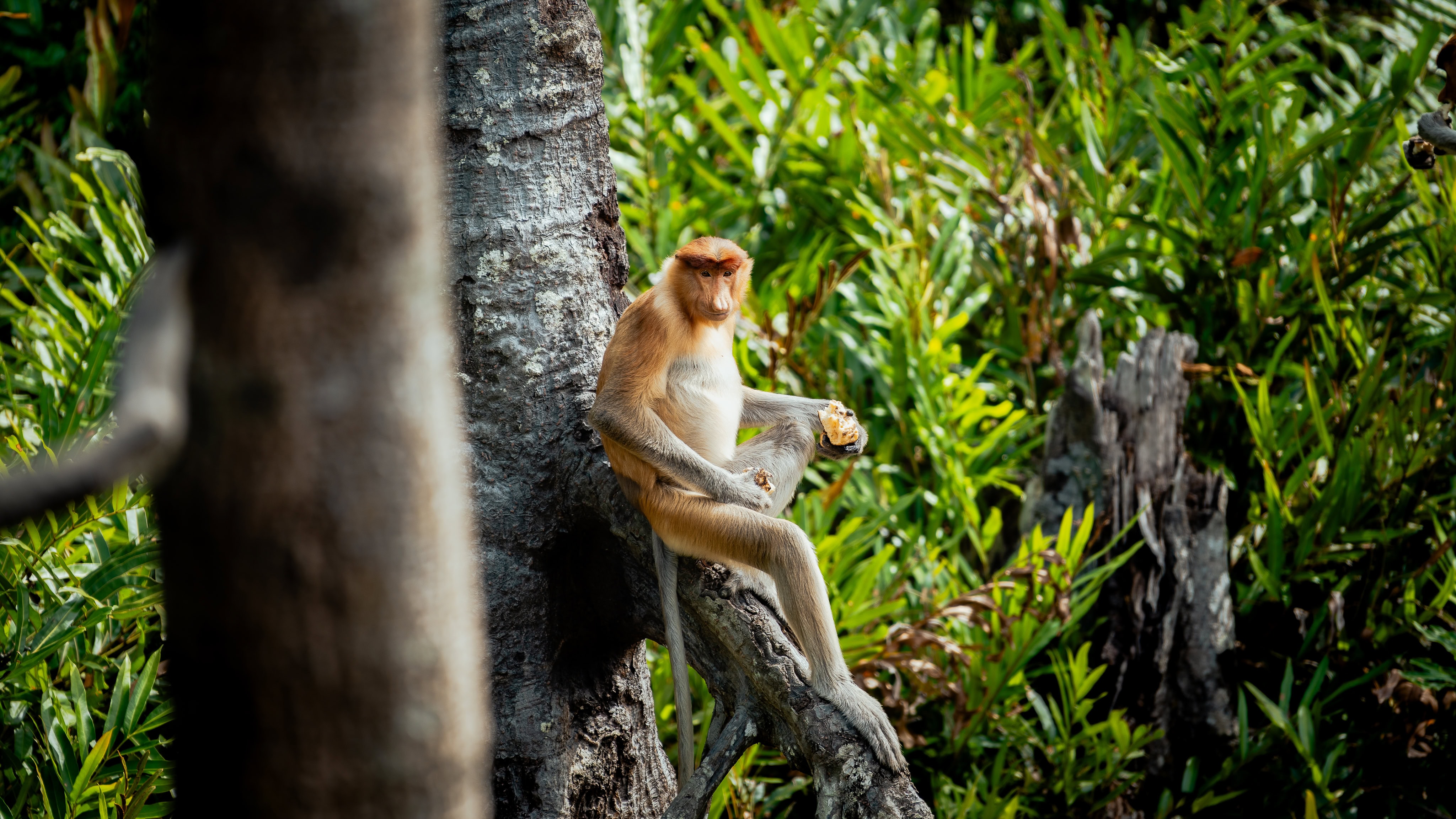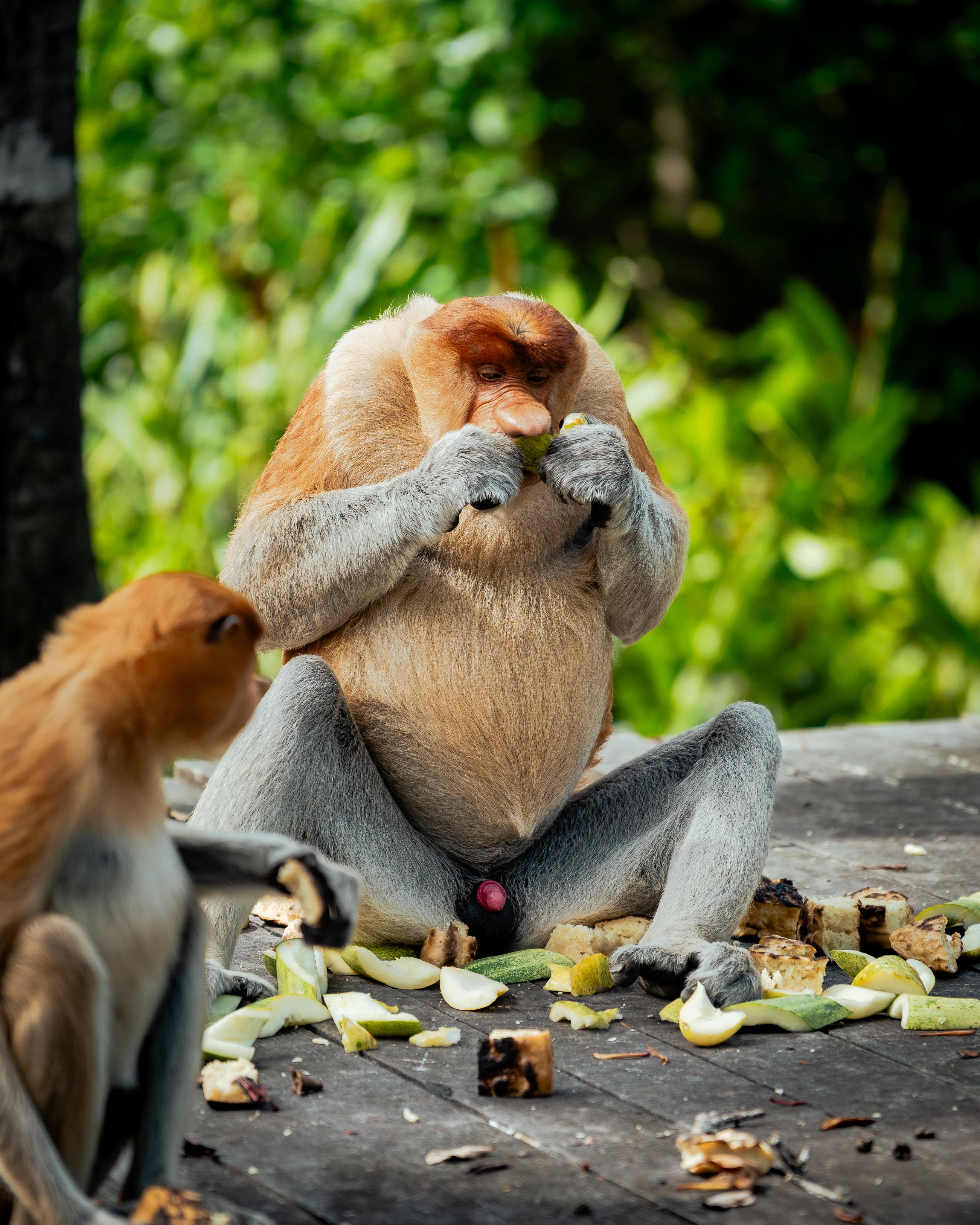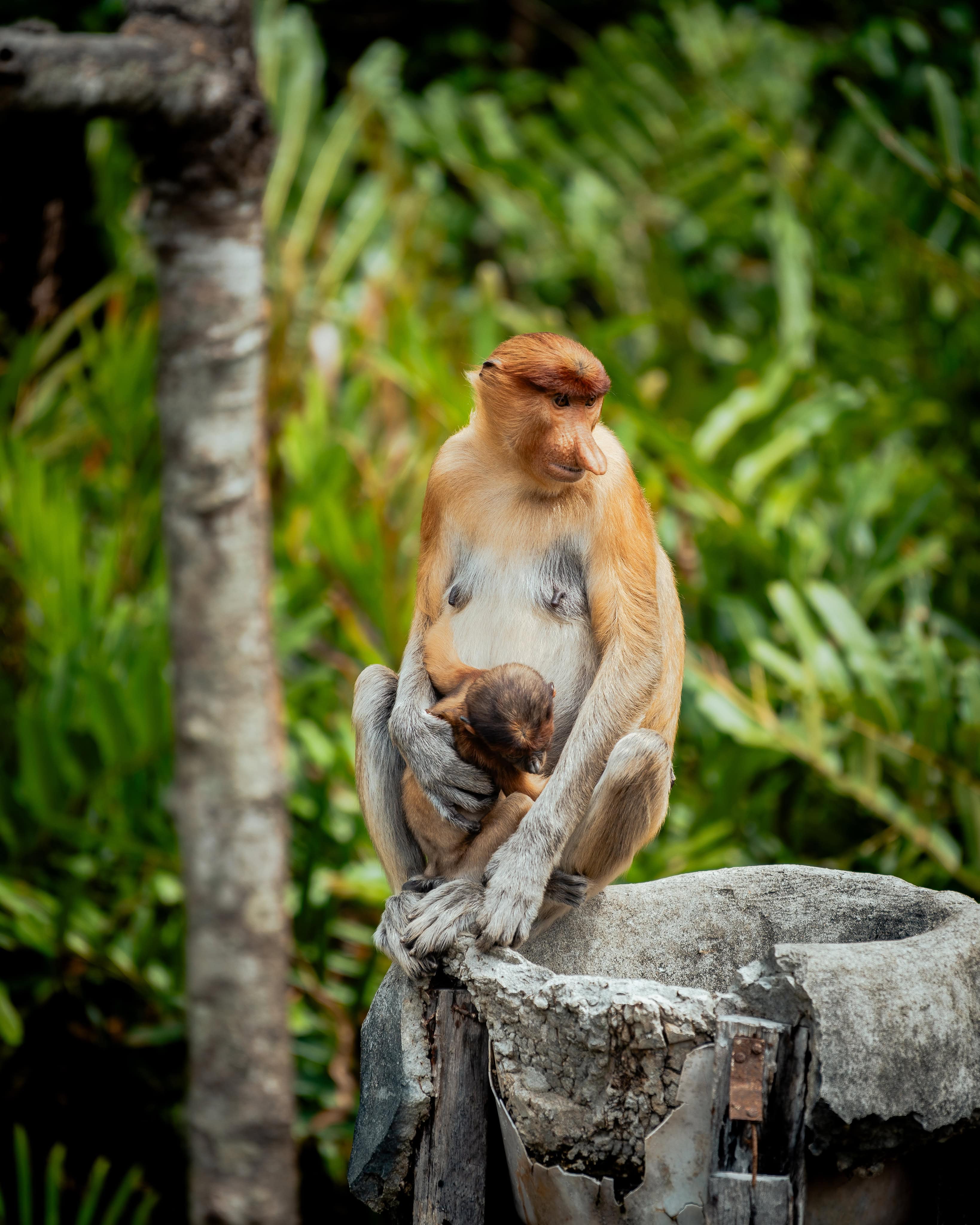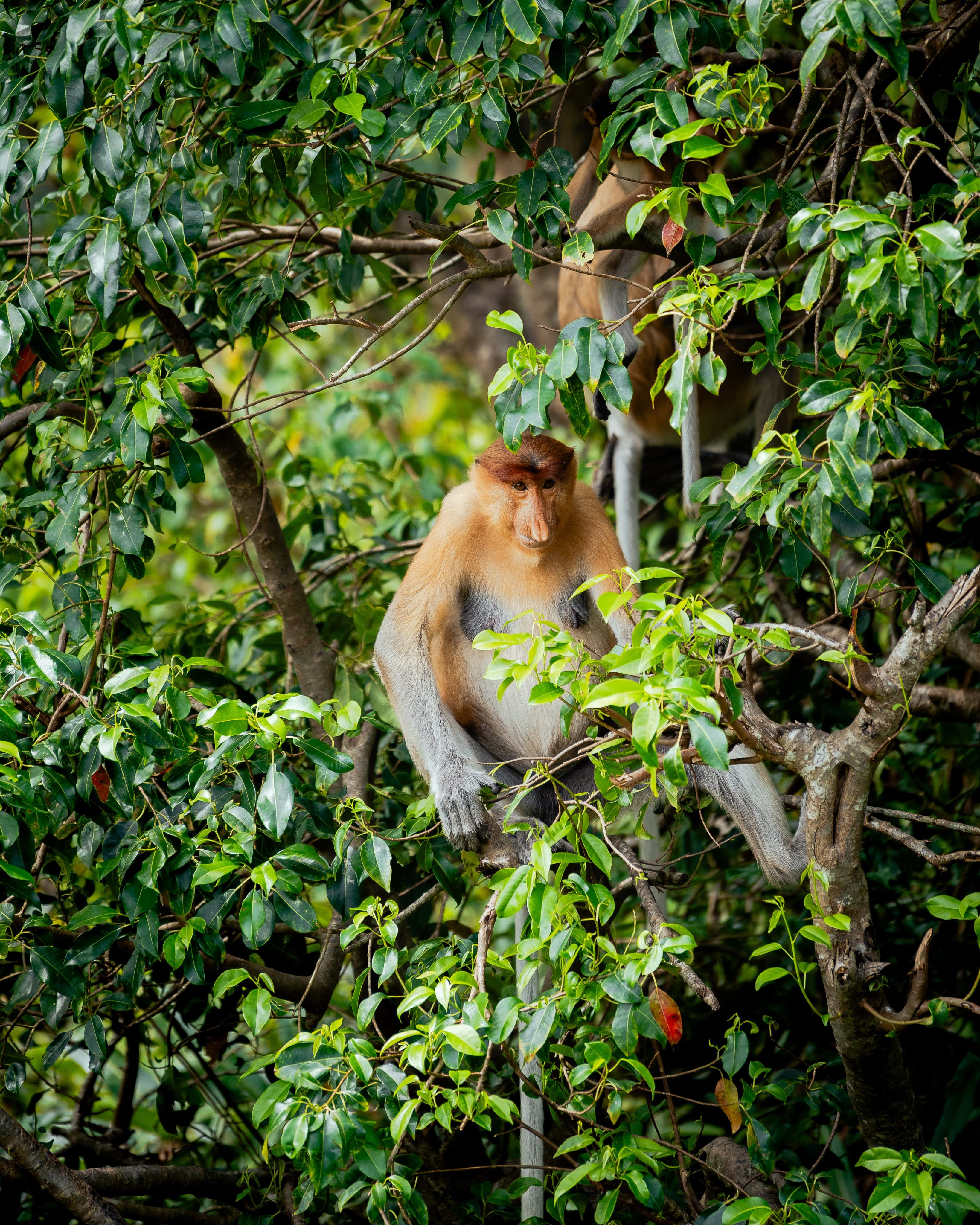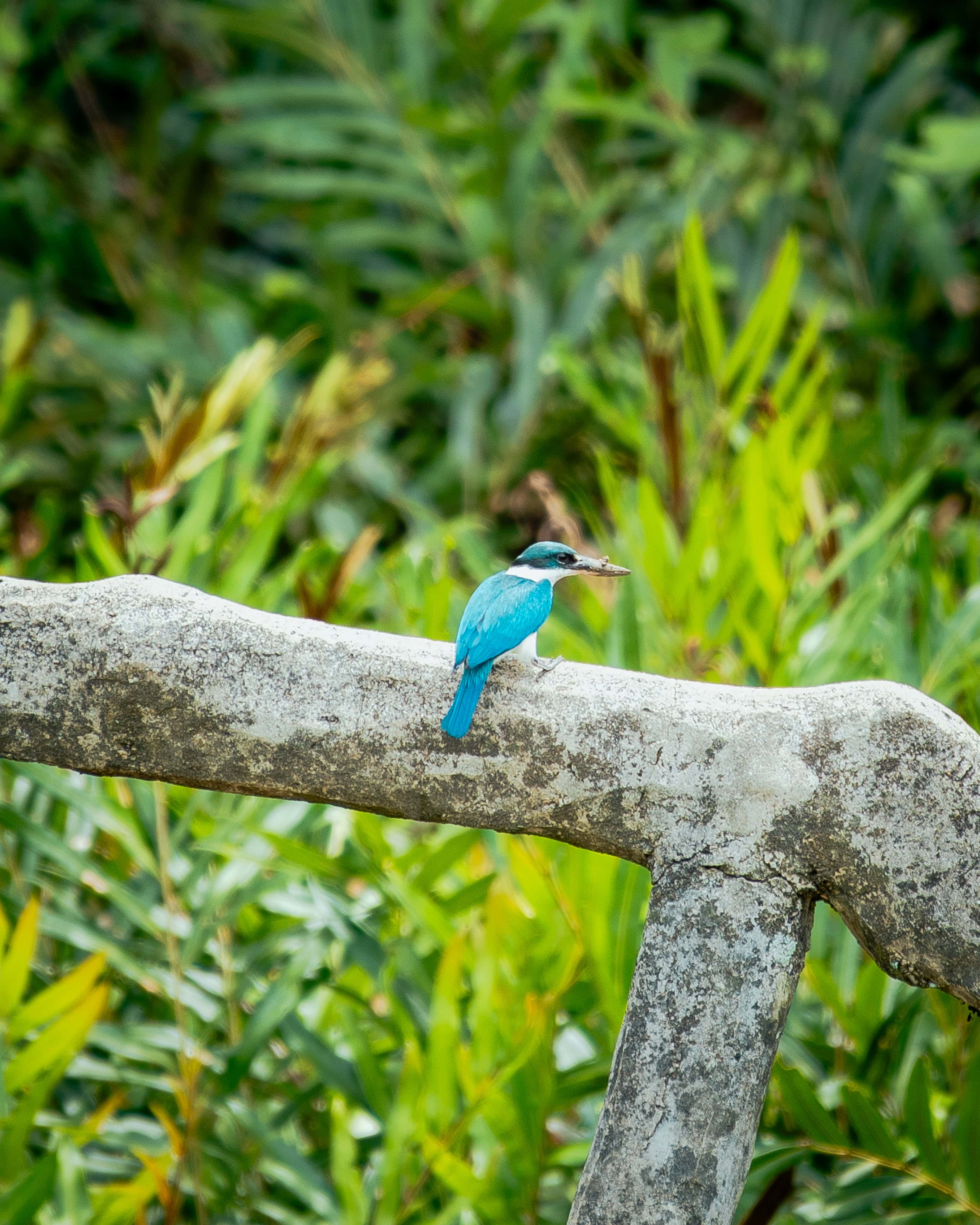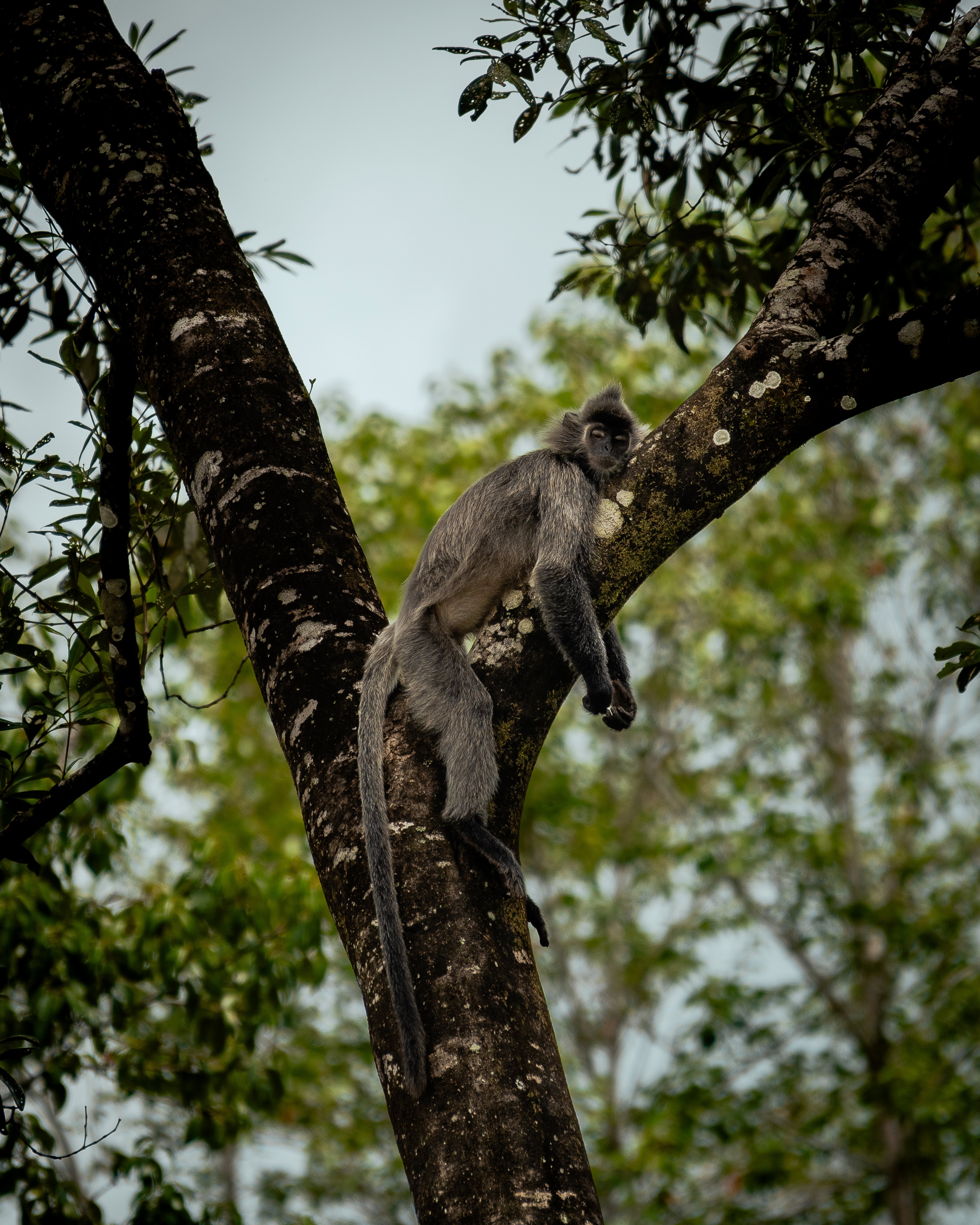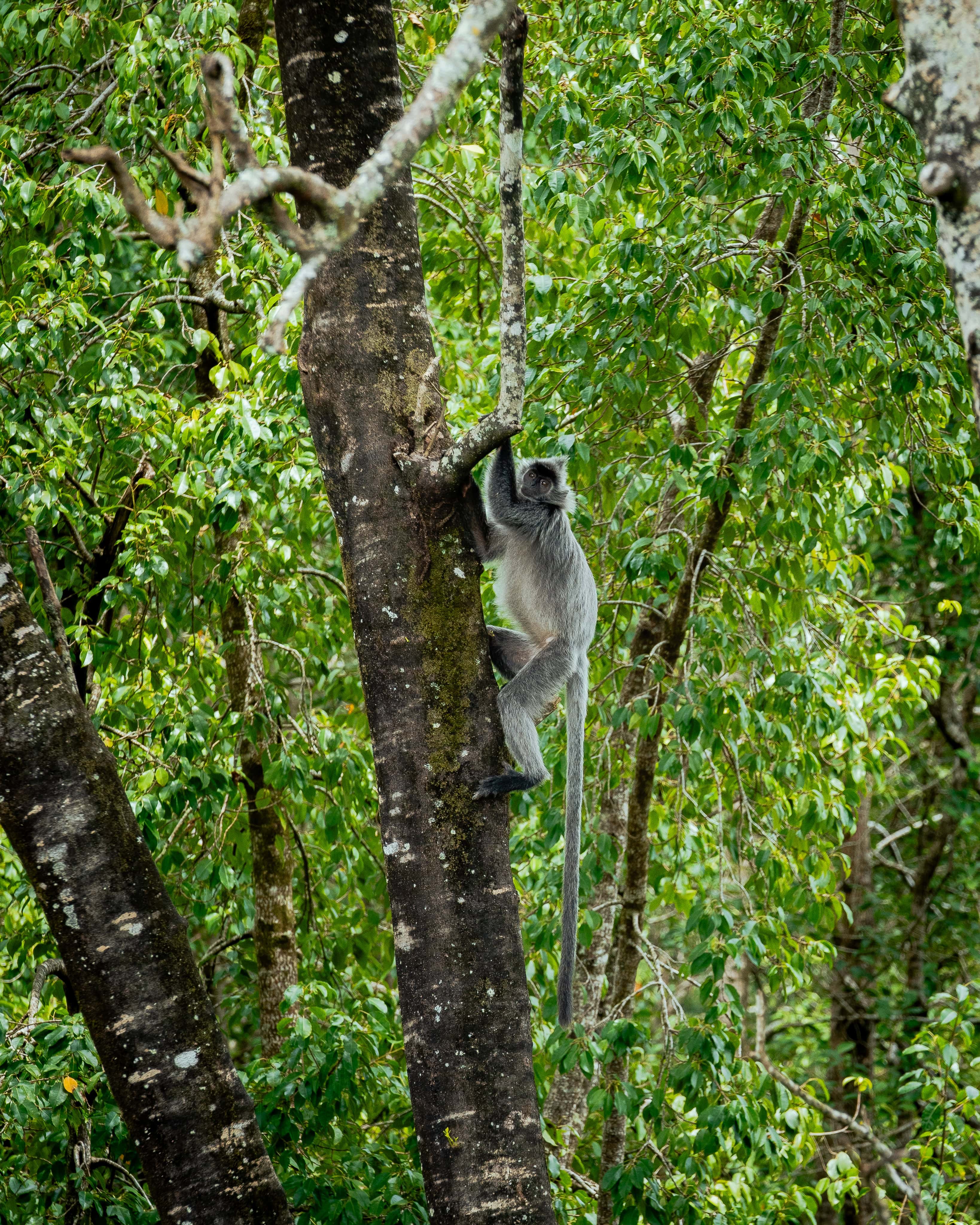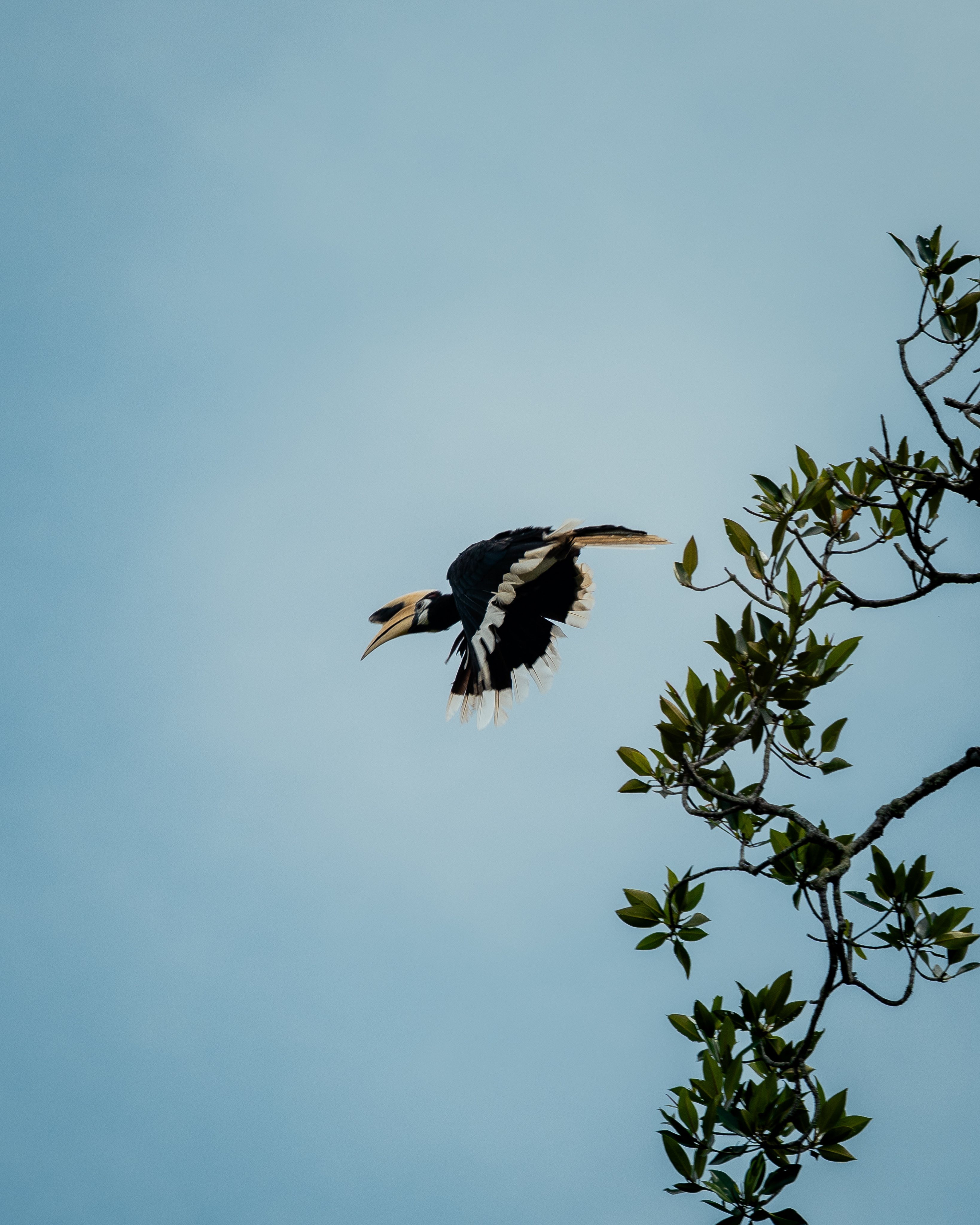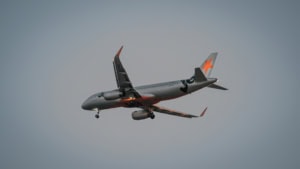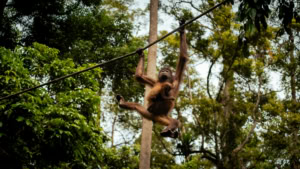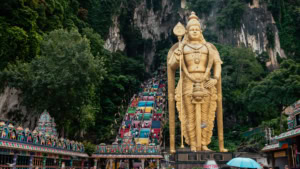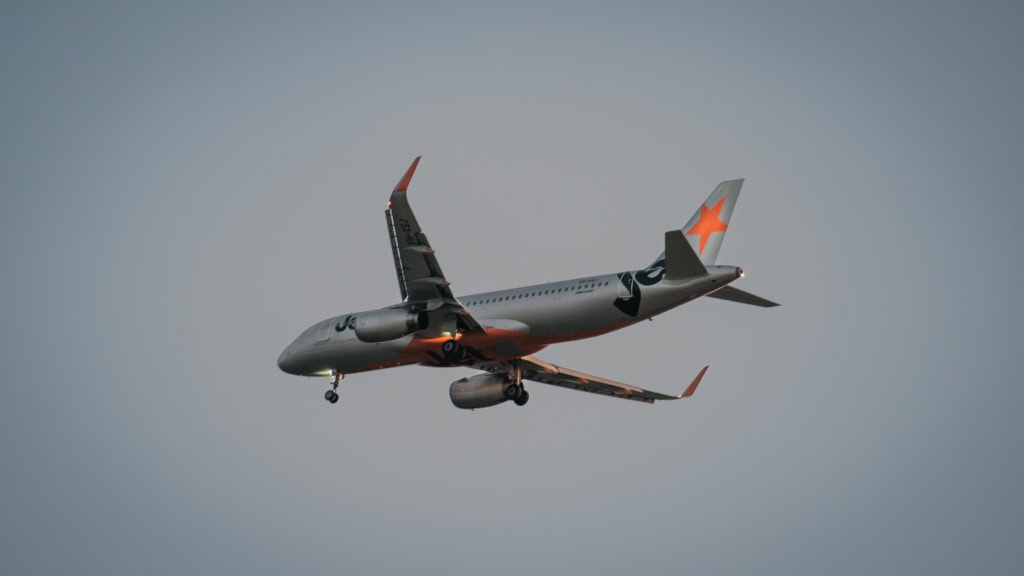Labuk Bay is one of the few places in Borneo where visitors can observe the fascinating proboscis monkey in its semi-natural, semi-wild habitat. Situated between endless palm plantations and ancient mangrove forests, this remote and difficult-to-reach private sanctuary offers a unique nature experience. Those who undertake the arduous journey will be rewarded with spectacular animal sightings and deep insights into the life of this rare primate species, as well as an authentic, unspoilt atmosphere.
Location and how to get there
Labuk Bay is located in the Sandakan region of the Malaysian state of Sabah on Borneo. Getting there is an adventure in itself and is only possible with your own vehicle, a hired driver or an organised transfer. There is no public transport. Many travellers therefore book private drivers for the day. As well as taking care of the transfer, they also stay on site and return after the visit. The journey from Sepilok or Sandakan takes around an hour, depending on the condition of the roads. The final part of the journey involves driving along narrow, unpaved roads through oil palm plantations. These roads are particularly difficult to drive on in rainy conditions.
The place itself is extremely remote. Surrounded by palm monocultures, the protected area resembles a small oasis amidst industrially utilised landscapes. Inside the site, wooden walkways wind through the dense mangroves and observation platforms are dotted throughout. There is hardly any infrastructure on site: no shops, petrol stations or internet access. There is a simple lodge and a small visitor centre with a café, but the area’s main attractions are its nature and its monkeys.
History and background
The Labuk Bay Proboscis Monkey Sanctuary was established by the owner of the surrounding palm oil plantations as a private initiative. The original plan was to clear the area, but this was changed when proboscis monkeys were discovered and a sanctuary was created instead. Since then, wooden walkways, visitor platforms, a café and the Nipah Lodge have been built. Unlike facilities for orangutans and sun bears, the focus here is on observation and photo tourism rather than rehabilitation or research.
The Proboscis Monkeys – Stars of Labuk Bay
The main attraction at Labuk Bay are the proboscis monkeys. This primate species is found exclusively in Borneo and is highly endangered due to habitat loss, palm oil plantations, poaching and other factors. They are characterised by their long, fleshy noses, which give them their unmistakable appearance and serve to amplify their calls.
Several stable groups of these animals live in Labuk Bay. The monkeys are largely wild and roam freely in the semi-protected area. They are accustomed to humans and often approach the feeding platforms. There, visitors can observe them in peace, eating, frolicking, engaging in territorial disputes and caring for their young.
The social behaviour of the proboscis monkeys is particularly fascinating. They live in harem groups consisting of a dominant male and several females with offspring. There are also bachelor groups, consisting of adolescent males who compete with each other before attempting to establish their own group. Their posture, facial expressions and interactions are extremely expressive, making them a highlight for behavioural observers and photographers alike.
Other wildlife
In addition to proboscis monkeys, silvered leaf monkeys can often be seen in Labuk Bay. These elegant, shy monkeys have silvery fur and distinctive faces, and are usually seen travelling in small groups. Their bright orange babies form a striking contrast to the silver-grey fur of the adults.
Macaques, especially the long-tailed crab-eaters, can also be seen from time to time. They tend to stay in marginal zones and search for food scraps. Their presence is closely monitored by rangers as they can sometimes be aggressive. Other animals in the reserve include monitor lizards, wild boars, and occasionally hornbills, kingfishers, and other birds of the mangrove zone.
In the remote areas of the reserve, slow lorises are said to occasionally appear after dark, but they are not really visible to daytime visitors!
The place itself – Atmosphere and special features
Labuk Bay is not a zoo. The sanctuary has been designed to bring visitors close to nature. The animals live freely in their natural habitat, and the visitor platforms are positioned so as to influence their behaviour as little as possible. Nevertheless, the animals are fed regularly to encourage them to come closer. Feedings take place twice a day on two different platforms, offering the best opportunity to observe as many animals as possible at close range.
The atmosphere is calm and almost meditative. There are no large crowds of tourists, no noise and no overloaded infrastructure. Those who come here do so intentionally. The sanctuary is a retreat for animals and nature lovers alike.
Why Labuk Bay is unique
Unlike other sanctuaries, such as Sepilok, which primarily focus on rehabilitation, Labuk Bay’s focus is on conservation and observation. The animals are not kept in cages or fenced in; they move around a large, near-natural area. In theory, they could migrate, but targeted feeding and the oil palm-dominated surroundings keep them close by. This provides fascinating insights into their lives without completely domesticating them.
Labuk Bay also demonstrates the potential of private nature conservation initiatives. The area was originally intended for use as a palm oil plantation. The fact that wildlife now inhabits the area is thanks to one owner’s decision to reorganise the land — a rare case of environmental protection in the private sector.
Tips for planning
- Best times: Early morning (9:30am) or late afternoon (4:30pm) are ideal.
- Preparation: Wear comfortable clothing and suitable shoes, and bring mosquito repellent, water and sun protection.
- Equipment: Cameras cost an additional RM 10; smartphones are usually excluded.
- Journey: Driver/taxi vs shared shuttle – the latter is simpler but has set times.
- Combination:This is the perfect addition to a trip to Sepilok, Kinabatangan or Turtle Island.
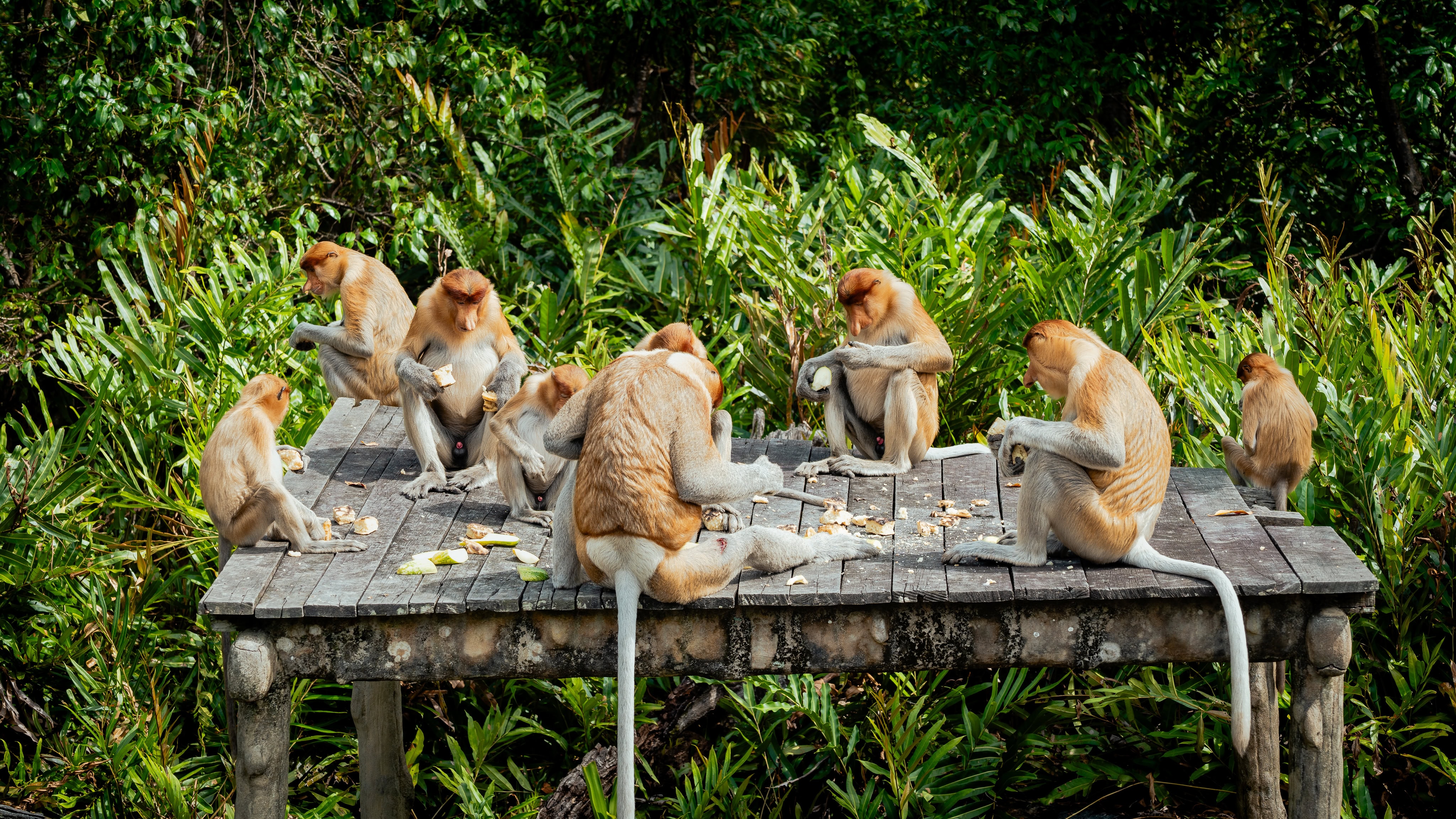
Labuk Bay is not an easy place. But that’s exactly what makes it special. Those who accept the long journey, poor roads and basic infrastructure will be rewarded with an intense experience: direct immersion in the life of one of the world’s most extraordinary monkey species, right in the heart of Borneo’s endangered mangroves.

